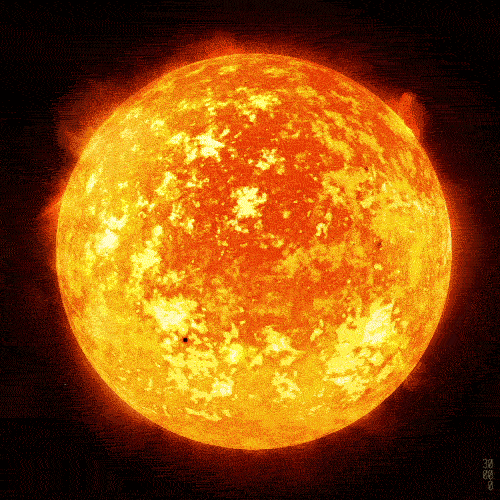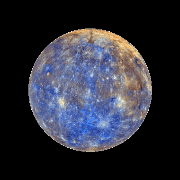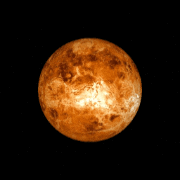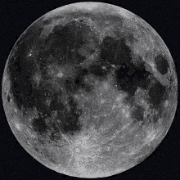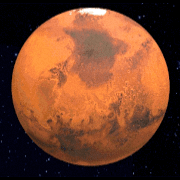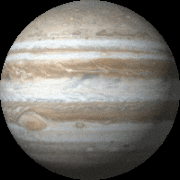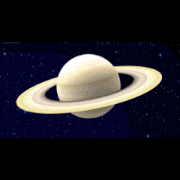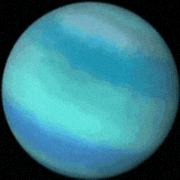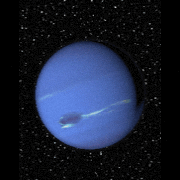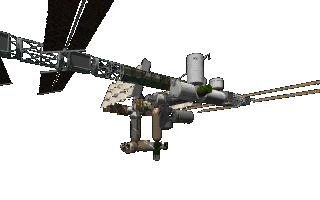Saturn — overview
Sixth planet from the Sun and second-largest in the Solar System (after Jupiter).
Gas giant composed mostly of hydrogen and helium with no solid surface.
Mean radius ≈ 58,232 km (about 9.45 Earth radii); equatorial radius larger than polar due to rapid rotation (significant oblateness).
Mass ≈ 5.683 × 10^26 kg (≈95 Earth masses).
Average density ≈ 0.687 g/cm^3 — less than water; would float if an enormous bathtub existed.
Orbital period (sidereal year) ≈ 29.46 Earth years.
Rotation: rapid and differential; approximate rotation period of the interior ≈ 10.7 hours (varies with latitude and by measurement method).
Effective temperature: cloud-top ≈ 134 K (−139 °C); internal heat source makes it warmer than equilibrium from sunlight alone.
Appearance and atmosphere
Distinctive pale yellow–gold color from ammonia crystals and other trace compounds.
Banding and belts similar to Jupiter but fainter and less contrasted; zones and belts driven by strong jet streams and differential rotation.
Prominent hexagonal wave pattern at the north polar region — a persistent, six-sided jet-stream structure about 30,000 km across.
Storms: long-lived features (e.g., Great White Spot — a giant periodic storm that appears roughly every 20–30 years), transient convective storms, and large vortices.
Composition: primarily molecular hydrogen (H2) and helium (He); trace gases include methane (CH4), ammonia (NH3), phosphine (PH3), water (H2O) vapor deeper down, and hydrocarbons (ethane, acetylene) in upper layers.
Clouds form in layers: upper ammonia ice clouds, ammonium hydrosulfide (NH4SH) deeper, and water clouds at greater depth.
Internal structure
Likely structure (outer → inner): molecular hydrogen atmosphere; a layer of metallic hydrogen at higher pressures; possible helium rain separating helium from hydrogen; a dense, rocky/icy core (mass uncertain — estimates vary from a few to ~20 Earth masses).
Heat flow: Saturn radiates more energy than it receives from the Sun due to slow gravitational contraction and possible helium differentiation (“helium rain”) releasing heat.
Rings
Saturn’s rings are its most famous feature: an extensive system of icy rings composed of countless particles ranging in size from micrometers to meters.
Major ring groups labeled A, B, C (brightest B), plus D (innermost, faint), E, F, G (outer/tenuous). The Cassini Division is a prominent gap between A and B.
Ring composition: mostly water ice with small amounts of rock and dust; particle albedos are high.
Ring structure: includes thousands of ringlets, gaps, waves, and spokes; many features result from gravitational interactions with moons (shepherd moons) and resonances with Saturn’s satellites.
Age and origin: debated — possible origins include breakup of a moon/comet, leftover material from planet formation, or a combination; age estimates range from tens of millions to billions of years.
Magnetosphere
Saturn has a strong magnetic field generated by motion within metallic hydrogen; magnetic moment weaker than Jupiter’s but still substantial.
Magnetosphere shaped by solar wind; contains radiation belts, plasma torus from moons (notably Enceladus), and aurorae at poles visible in ultraviolet and infrared.
Magnetic field is unusually axisymmetric (very nearly aligned with rotation axis), which challenged theories of dynamo processes.
Major moons
Saturn has 80+ confirmed moons (count varies with discoveries and naming); diverse in size and composition.
Titan: largest moon and the second-largest moon in the Solar System. Diameter ≈ 5,150 km (larger than Mercury). Dense nitrogen-rich atmosphere with methane and complex organic chemistry; surface features include dunes, lakes and seas of liquid methane/ethane, and possible cryovolcanism. Titan is a prime astrobiology target.
Enceladus: smaller (≈504 km diameter) but geologically active; has south-pole geysers that eject water-ice plumes and vapor into space, feeding Saturn’s E ring and indicating a subsurface salty ocean — high interest for habitability.
Rhea, Iapetus, Dione, Tethys, Mimas: other mid-sized icy moons with varied geology. Iapetus notable for extreme two-tone coloration and an equatorial ridge; Mimas famous for a large impact crater (Herschel) giving a “Death Star” appearance.
Shepherd moons (e.g., Prometheus, Pandora) help maintain ring structure.
Exploration
Flybys: Early missions included Pioneer 11 (1979) and Voyagers 1 & 2 (1980–81) which provided first close-up images and ring/magnetosphere data.
Orbiter: Cassini–Huygens (NASA/ESA/ASI), arrived 2004 and operated until 2017. Provided extensive data on rings, moons, atmosphere, magnetosphere. Huygens probe landed on Titan in 2005 — first landing in the outer Solar System.
Cassini discoveries: active plumes on Enceladus, detailed ring dynamics, seasonal changes, complex atmospheric chemistry, Titan’s surface lakes and dunes, and measurements of internal structure and gravity.
End of mission: Cassini performed a controlled plunge into Saturn in September 2017 to avoid contaminating moons.
Seasonal and orbital dynamics
Saturn’s axial tilt ≈ 26.7°, similar to Earth’s, so it experiences seasons over its long 29.5-year orbit.
Seasonal changes affect ring illumination, atmospheric temperatures, chemistry, and storm activity.
Orbital resonances with moons create structures in rings and influence moon geology.
Key physical numbers (rounded)
Semi-major axis: ≈ 9.58 AU.
Orbital period: ≈ 29.46 Earth years.
Mean radius: ≈ 58,232 km.
Mass: ≈ 5.683 × 10^26 kg.
Mean density: ≈ 0.687 g/cm^3.
Rotation period: ≈ 10.7 hours.
Effective temperature (cloud tops): ~134 K.
Science and astrobiology importance
Titan and Enceladus are high-priority astrobiology targets: Titan for prebiotic organic chemistry and surface liquids; Enceladus for subsurface ocean and potential habitability.
Saturn’s rings offer a natural laboratory for studying disk dynamics, which scale to broader astrophysical disks (protoplanetary disks, accretion disks).
• • Studying Saturn’s composition and formation helps constrain models of giant-planet formation and Solar System evolution.


